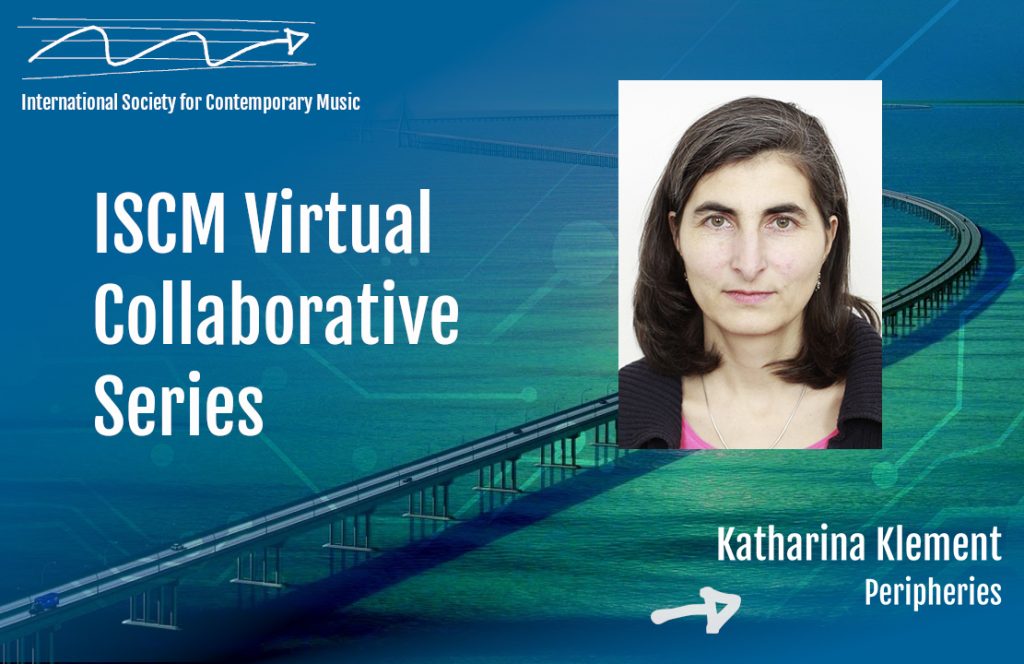Katharina Klement: Peripheries

Katharina Klement (b. 1963 in Graz, Austria) is a composer-performer in the field of notated and improvised, instrumental and electronic music. Her instrumental and electronic compositions emphasize spatial conceptions and crossover projects combining music, text, video, and performance art. She has a particular interest in extended playing techniques on the piano. A founder and member of numerous ensembles for improvised and collective composed music (e.g. deepseafish-K, éclair, subshrubs, REDOX, USE, soundog, monocle), she has also composed works for Austrian radio and television, “jeunesse” Austria, numerous small ensembles and soloists, the Nobel Prize-seminar Vienna, Linz cultural capital 09, dramagraz, Theater Marie Aarau, festival e-may Vienna, musikprotokoll Graz Austria, Klangforum Wien, institute for media-archeology Austria, and Wien Modern. Her music has been performed in concerts in Austria and abroad, including Festival Kaleidophon Ulrichsberg, Tage für Neue Musik Zürich, Offenes Kulturhaus Linz, festival Inventionen Berlin, festival Midi-Alternativa Moskau, city of women Ljubljana, gallery O´artoteca Milano, SECCA North Carolina, Roulette (New York City), Festival Arts Stay Slowenien, Klangspuren Schwaz, musiques & recherches Bruxelles, and Logan Center for the Arts (Chicago). Since 2006, she has been lecturer in electronic media and computer music at the University for Music and Performing Arts in Vienna.
About her composition Peripheries, Klement writes: In 2014, I spent nine weeks in Belgrade, focusing on the questions, “What does this city sound like? Is it possible to portray it using sounds?” In numerous excursions to different areas of the city, I collected sounds and noises. In addition, I conducted several interviews about the soundscape of Belgrade with people of different ages and backgrounds. The resulting comprehensive acoustic archive, or memory, became the basis of my compositional approach. One characteristic of Belgrade is its numerous peripheries: Even within the historic city center, you may quickly and unexpectedly find yourself in fringe areas. The transitions are sudden – when it comes to sounds, you abruptly move from loud and noisy areas into others that are delicate and subtle. Also, I discovered circles in various contexts: in architecture, in ornaments, in traffic regulations; even time seems to be perceived as circular rather than clocked and linear as it is commonly understood in central Europe. I designed a score by using my city map: The location of my apartment was the center, around which I drew eight concentric circles. During the compositional process, all the recordings from each of these rings were combined into one layer, resulting in eight musical layers. The piece was then composed with eight channels, for a setting that uses eight speakers. Like in an “acoustic blender,” selected field recordings (some raw and some processed) create a sustained moment of density: a musical likeness of Belgrade. While the components of this sound portrait are taken from the acoustic reality of the city, the compositional process transforms them, giving them a new quality. Belgrade’s highly expressive and captivating character was extracted and abstracted through music. The entire structure is divided into smaller sequences which, however, merge seamlessly.
